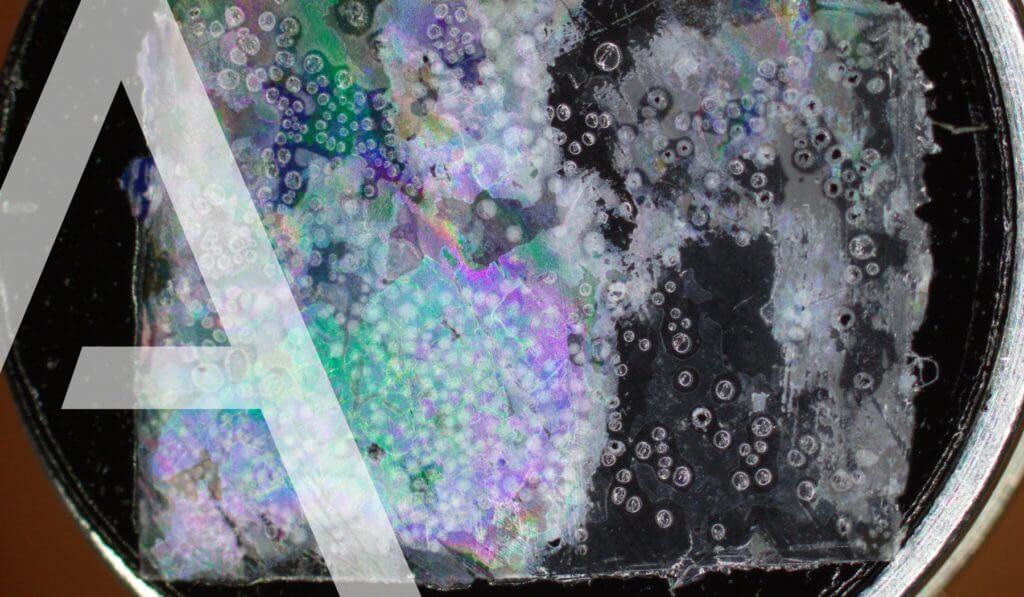Authentication of glass objects
Discover the authentication of glass objects based on their chemical composition, analysis of alterations and deposits. Discover the analytical protocol implemented by CIRAM laboratories in the physico-chemical analysis of glass objects.

As with rocks or metal, there is no dating method for glass, or enamel per se. But the multi-criteria, multi-disciplinary approach of CIRAM laboratories enables us to give an opinion on the age of your glass objects.
A precise analytical protocol for the study of glass objects
For the study of art objects, the first and most obvious type of marker is the chemical composition of the material. Secondly, CIRAM laboratories observe the passage of time and induced alteration. The composition of materials must correspond to the manufacturing techniques of the time. For weathering, the degradation of the materials must be of natural origin.
The chemical composition of glass, the first decisive marker
The chemical composition of glass or enamel is a precious source of chronological information: vitrifiers, stabilizers, fluxes, or even pigments, the results already provide valuable information.
The composition of a glass, enamel or glaze may be significant of an era or civilization. For example, lead and potassium concentrations will indicate whether the glassmaking technique corresponds to the Middle Ages or the Renaissance. The nature of the pigments can identify modern production. Cadmium or chromium will date glass or stained glass from the 19th or 20th century.
Our scientists analyze the chemical nature of the glass and the chromogenic elements present to already provide objective data that our laboratory teams interpret to pronounce on the age of glass objects.
Glass weathering analysis, a crucial step
The most important part of examining a glass object is analyzing its weathering. A glass object, hundreds or thousands of years old, will have undergone significant environmental weathering, due to humidity, temperature variations and the development of micro-organisms. The degree of weathering provides chronological clues as to age or modernity. Glass weathering depends not only on the environment in which it is stored, but also on its composition. If conditions are highly alkaline, then the silica contained in the glass may be progressively dissolved, leaving a dull surface. Under more neutral, slightly alkaline or acidic conditions, glass corrosion is characterized by the progressive elimination of alkaline ions (leaching), sodium and potassium, as well as certain alkaline-earth ions (notably calcium). These are replaced by water and hydroxide ions, OH-. These processes will induce an onion-skin appearance on the surface (laminated multilayers), which may appear iridescent due to the diffraction of light by this microstructure.
Detecting falsification thanks to the presence of fluorine
On the contrary, if fluorine is detected in altered areas, we will be in the presence of artificial, modern alteration, i.e. incompatible with an ancient period. In fact, the presence of fluorine is totally abnormal in the context of natural burial or the natural ageing process of glass. Fluorine is not present in natural groundwater, as it reacts strongly with calcium to form insoluble minerals. As calcium is one of the most abundant elements in soils, the possibility of observing certain soluble fluorine ions is extremely limited. Thus, fluorine cannot originate from pollution of the object’s environment.
The presence of fluorine is highly problematic, as it indicates that the object has been artificially altered with hydrofluoric acid or a fluorine-rich compound, in order to simulate glass aging. This acid is the only one capable of dissolving glass. It cannot be used for cleaning or restoration purposes. Consequently, the presence of fluorine associated with weathered” areas of glass constitutes a formal indication of modernity.
